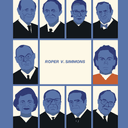
“States still operating a capital punishment system are incapable of administering the death penalty free from racial discrimination and arbitrariness.” So argues Alexis Hoag (pictured), Practitioner in Residence at the Eric H. Holder Jr. Initiative for Civil and Political Rights at Columbia University, in an article in the Spring 2020 issue of the Columbia Human Rights Law Review.
Hoag’s article, Valuing Black Lives: A Case for Ending the Death Penalty was published in connection with the Columbia Law School’s Symposium, Furman’s Legacy: New Challenges to the Overbreadth of Capital Punishment. She writes that the death penalty violates the Fourteenth Amendment to the U.S. Constitution because, in the nearly half-century since Furman v. Georgia declared existing U.S. death-penalty statutes unconstitutional, the capital punishment laws enacted in its wake continue to systemically discriminate on the basis of the race of murder victims.
“Since its inception, the disproportionate imposition of the death penalty has denied murdered Black victims the equal protection of the laws,” Hoag writes, placing a higher value on the lives of white murder victims while undervaluing the lives of Black murder victims. “Capital punishment is supposed to be reserved for those who commit the ‘worst of the worst’ crimes. Instead, as a result of bias, prejudice and racism, it is disproportionality reserved for those charged with killing white victims.”
Hoag traces the devaluation of Black victims from early American slave codes that treated crimes against slaves as property crimes against white slaveholders to Antebellum laws that explicitly established different offenses and different punishments based upon the races of the victims and alleged perpetrators. She describes how the blatantly racist application of criminal law across the South contributed to the adoption of the Fourteenth Amendment. “When Senator Jacob Howard of Michigan introduced the Amendment to the Senate, he explained: ‘It prohibits the hanging of a black man for a crime for which the white man is not to be hanged.’ Forefront in the framers’ minds was to provide redress to Black victims of crimes, and to end the legal discrepancies that had long existed in Southern states.”
Hoag examines the consequences of the U.S. Supreme Court’s decision in McCleskey v. Kemp, which rejected a Fourteenth Amendment equal protection challenge to the death penalty that was supported by strong statistical evidence of persistent racial disparities in the application of the death penalty. Although this evidence was the type routinely accepted as proof in other equal protection cases alleging discrimination in education, employment, and access to housing, the Court said this evidence of systemic discriminatory law enforcement was not probative of discrimination in an individual case.
“[F]inding an equal protection violation,” Hoag writes, “would have required the Court to acknowledge deeply entrenched, systemic racism in the administration of the death penalty. It was unwilling to concede that racism, bias, and prejudice played a role in police investigations, prosecutor charging decisions, and jury and judge decision-making.” Instead, Hoag says, the Court “created a regime where the most relevant and probative evidence — i.e., historical discrimination and deliberate disproportionate punishment — could not be used to establish a Fourteenth Amendment equal protection violation. This undermined the intent to extend redressability to Black people inherent in the Fourteenth Amendment.”
With an additional three decades of data documenting the continuing discriminatory application of the death penalty, Hoag advocates that a new challenge to the constitutionality of the death penalty should be mounted, “centered on the undervaluation of Black lives.” That challenge should identify specific cases that appear as close to identical as possible on their face but resulted in a death sentence for a Black defendant charged with murdering a white victim and no capital prosecution at all for a defendant charged with murdering a Black victim. Defense counsel should then marshal the evidence of “racism in the community where the cases are being prosecuted, in the prosecuting attorney’s office, and in the investigating police department” and “evidence of racial discrimination from the specific prosecutors involved in the charging decisions — their record of [discriminatory jury selection practices], their personnel files, and any public statements they have made.”
No death penalty system will eliminate racism from its application, Hoag argues, so long as “the American public and the justice system continue to undervalue Black lives. Where multiple actors in the justice system — law enforcement, prosecuting attorneys, and the jury — all contribute to consistent race-of-victim disparities in death sentencing, there can be no constitutional administration of capital punishment.”
Hoag concludes, “Placing equal value on Black lives — perpetrators and victims — relative to white lives, would compel the criminal legal system to address longstanding racial discrimination in the operation of the death penalty. Rather than expand or even reform capital punishment, the only solution is abolition.” Abolition, she says, “forces the law to confront the dehumanization, violence, and racial degradation inherent in death sentencing. Empirical evidence gathered since Furman illustrates that our nation is incapable of administering the death penalty free from racial discrimination. It is time for this nation to cease tinkering with the machinery of death and to abolish capital punishment.”
Source: Alexis Hoag, Valuing Black Lives: A Case for Ending the Death Penalty, Columbia Human Rights Law Review, Spring 2020.


